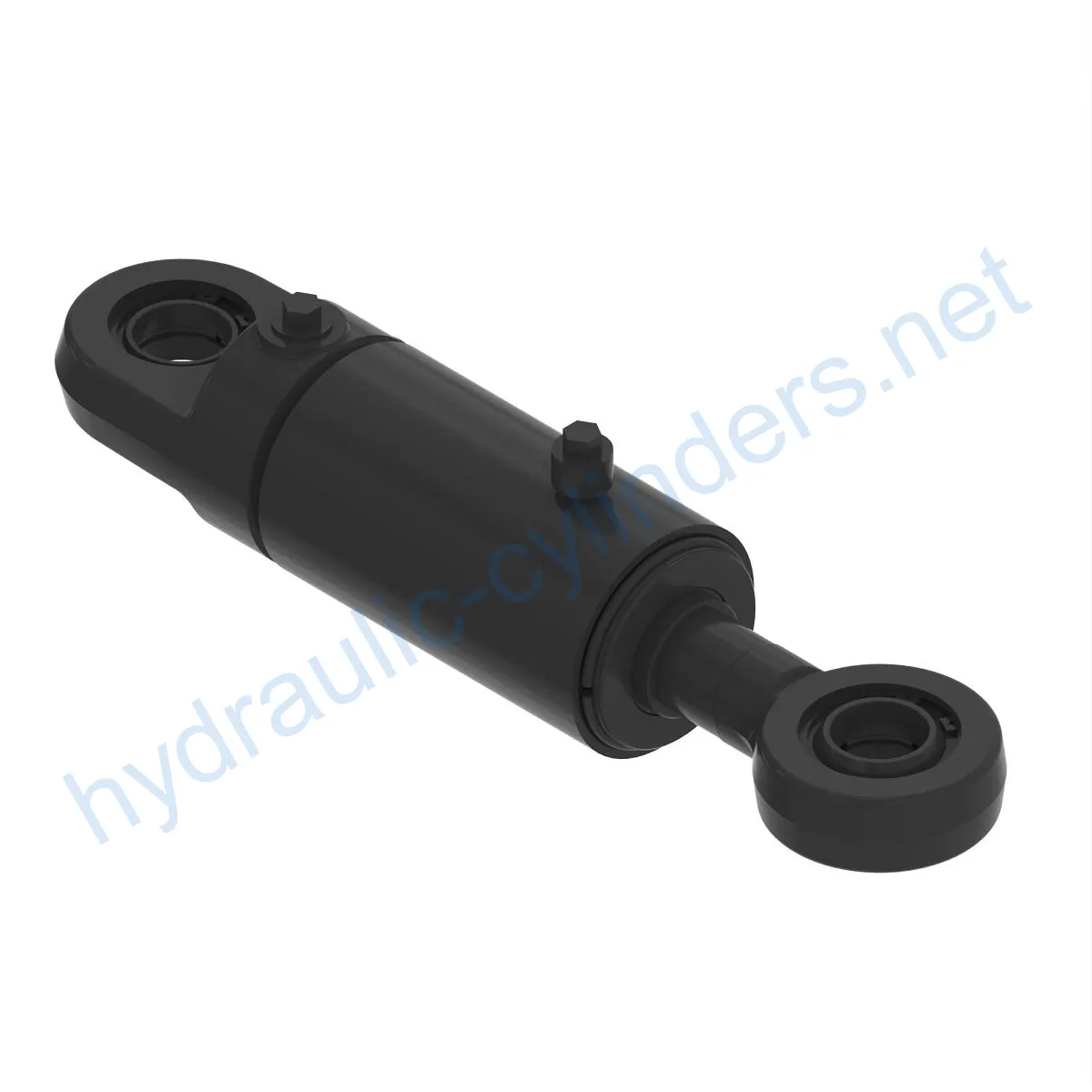Replacement Of AHC14489 Tilt Hydraulic Cylinder
En tant que fabricant, fournisseur et exportateur de produits mécaniques, nous proposons des vérins hydrauliques et de nombreux autres produits.
N'hésitez pas à nous contacter pour plus de détails.
Courrier :sales@hydraulic-cylinders.net
Fabricant fournisseur exportateur de vérins hydrauliques.
Replacement Of AHC14489 Tilt Hydraulic Cylinder
The Replacement Of AHC14489 Tilt Hydraulic Cylinder is a hydraulic component designed for various models including 333G, 450H, 450J, 450K, 550, 550H, 550J, 550K, 650H, and 650J. It is an essential part that plays a crucial role in the efficient operation of equipment.
Specifications
- Weight: 51.63 lb
- Height: 4.5 in
- Width: 5.8 in
- Length: 22.5 in
Features
1. Improved Equipment Performance:
Replacing damaged or worn hydraulic cylinders restores the equipment’s normal operational capabilities, ensuring optimal performance in various applications.
2. Enhanced Safety:
Regularly replacing hydraulic cylinders reduces safety hazards caused by cylinder failures, ensuring the safety of both operators and equipment.
3. Overload Protection:
New cylinder designs often include better overload protection mechanisms, enhancing safety during operation.
4. Quick Installation:
Modern hydraulic cylinders are designed for easy installation and replacement, minimizing downtime.
5. Standardized Components:
Many hydraulic cylinders are standardized products, making it easier to obtain replacement parts in the market.
Applications
The Replacement Of AHC14489 Tilt Hydraulic Cylinder finds applications in various scenarios:
1. Excavators:
In excavators, the hydraulic cylinder in the arm or bucket may get damaged due to prolonged use or overloading, requiring replacement to restore normal operation.
2. Cranes:
The boom hydraulic cylinders in cranes are prone to wear during frequent lifting and lowering operations, necessitating regular replacement for safety.
3. Tractors:
The front-end loader hydraulic cylinders in tractors may develop leaks or experience performance decline due to constant lifting and tilting operations, requiring replacement.
4. Harvesters:
During harvesting, the hydraulic system undergoes high pressure, and cylinders may get damaged due to fatigue. Timely replacement ensures work efficiency.
5. Automated Production Lines:
Hydraulic cylinders are used to control robotic arms and other automated equipment. Cylinder failures can affect production efficiency, requiring immediate replacement.
Maintenance Tasks
Regular maintenance tasks for hydraulic cylinders include:
1. Periodic Inspections:
Regularly inspecting cylinders ensures early detection of any potential issues and allows for timely maintenance.
2. Proper Lubrication:
Applying appropriate lubrication helps reduce friction and extends the lifespan of the cylinder.
3. Seal Replacement and Calibration Checks:
Replacing worn seals and performing calibration checks ensures optimal performance and prevents leaks.
Safety Considerations and Environmental Factors
When using hydraulic cylinders, safety measures are crucial:
1. Importance of Safety Measures:
Proper safety measures should be implemented when handling hydraulic cylinders to prevent accidents and ensure operator safety.
2. Environmental Impact:
Considering environmental factors when using hydraulic cylinders helps minimize potential damage and promotes sustainable practices.
Troubleshooting and Common Issues
Common issues and troubleshooting tips for hydraulic cylinders:
1. Leakage:
If there is a leakage in the hydraulic cylinder, check for damaged seals or loose connections. Replace seals and tighten connections as needed.
2. Insufficient Power:
If the cylinder lacks power, check for low hydraulic pressure, inadequate lubrication, or damaged components. Address the root cause accordingly.
3. Slow Operation:
If the cylinder operates slowly, inspect the hydraulic fluid levels, consider potential blockages, or check for worn-out seals. Take appropriate action to restore proper functioning.
Product Design Considerations and Selection Criteria
Product design considerations and selection criteria for hydraulic cylinders:
1. Load-Bearing Capacity:
The hydraulic cylinder should be chosen based on its load-bearing capacity to ensure optimal performance and safety.
2. Sealing and Durability:
Hydraulic cylinders with reliable sealing mechanisms and durable construction are essential for long-term performance.
3. Safety and Maintenance:
Considering safety features and ease of maintenance when selecting hydraulic cylinders helps optimize functionality and reduce downtime.
Sealing and Lubrication
Proper sealing and lubrication techniques for hydraulic cylinders:
1. Sealing Components:
Utilize various sealing components such as piston seals and rod seals made from wear-resistant materials like polyurethane or nitrile rubber.
2. Surface Treatment:
Fine surface treatment of cylinder bodies and threaded ends enhances wear resistance and extends the operational lifespan.
3. Lubrication:
Regularly lubricate the hydraulic cylinder with the appropriate amount of hydraulic oil to ensure smooth operation.
Regular Inspections and Preventive Maintenance
Effective preventive maintenance techniques for hydraulic cylinders:
1. Correct Installation:
Properly align the cylinder during installation and provide guidance on aligning the cylinder correctly.
2. Recommended Inspection, Repair, and Replacement Procedures:
Follow recommended inspection, repair, and replacement procedures to ensure the longevity and optimal performance of hydraulic cylinders.
3. Parts Replacement and Rebuilding Services:
Offer replacement parts and rebuilding services to enhance the lifespan and functionality of hydraulic cylinders.
Installation Guide
Ensure the correct installation of the hydraulic cylinder using the following guidelines:
1. Alignment:
Align the cylinder properly during installation to prevent misalignment and potential damage.
2. Use of Installation Brackets:
Recommend using appropriate installation brackets to secure the cylinder firmly in place.
3. Recommended Inspection, Repair, and Replacement Procedures:
Provide step-by-step instructions for inspection, repair, and replacement procedures to ensure proper installation and maintenance.
Author: lyl

Last Updated: [Insert date]
Our Company
We are a leading manufacturer and wholesaler of replacement hydraulic cylinders, offering a comprehensive range of products for both domestic and international markets.
Professionalism:
We pride ourselves on our professionalism, ensuring high-quality products and services for our customers.
International Certifications:
Our products meet international standards and certifications, guaranteeing their reliability and performance.
Customization Services:
We provide customization services to meet specific requirements and ensure the
Visitez notre usine de RV :
Visitez notre usine de RV avec les éléments suivants
Comment fonctionne le vérin hydraulique d'un chariot élévateur ?
Vérin hydraulique Application :


